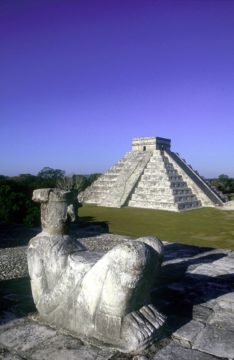From The New Yorker:
 In this week’s New Yorker, the contributing writer Merve Emre examines the life and work of Italo Calvino, whom she describes as “word for word, the most charming writer to put pen to paper in the twentieth century.” Born a hundred years ago in Cuba, Calvino relocated as a child to his parents’ native Italy, and eventually became the most-translated Italian author of his era. In 1983, The New Yorker published “The Jaguar Sun,” Calvino’s first story in the magazine and the only one to appear in its pages while he was alive. In the story, a couple enters an odd and rocky phase of their marriage while vacationing in Mexico—and while bonding over a sampling of dishes that contain the native hot chile pepper. With vivid descriptions of the dishes—and of the physical responses they elicit—the piece also opens “Under the Jaguar Sun,” Calvino’s unfinished collection of stories about the senses.
In this week’s New Yorker, the contributing writer Merve Emre examines the life and work of Italo Calvino, whom she describes as “word for word, the most charming writer to put pen to paper in the twentieth century.” Born a hundred years ago in Cuba, Calvino relocated as a child to his parents’ native Italy, and eventually became the most-translated Italian author of his era. In 1983, The New Yorker published “The Jaguar Sun,” Calvino’s first story in the magazine and the only one to appear in its pages while he was alive. In the story, a couple enters an odd and rocky phase of their marriage while vacationing in Mexico—and while bonding over a sampling of dishes that contain the native hot chile pepper. With vivid descriptions of the dishes—and of the physical responses they elicit—the piece also opens “Under the Jaguar Sun,” Calvino’s unfinished collection of stories about the senses.
On the outskirts of Mexico City, the unnamed narrator and his wife, Olivia, visit a former convent’s cloister and eat chiles en nogada, “somewhat wrinkled little peppers, swimming in a walnut sauce whose harshness and bitter aftertaste were drowned in a creamy, sweetish surrender.” In Oaxaca, a folkloric painting of a nun, who died of love, seems to make the couple hungry; at the hotel restaurant, they snack on guacamole, “scooped up with crisp tortillas that snap into many shards and dip like spoons into the thick cream.” After the pair visit the sacred and spooky ruins of Monte Albán, the menu turns fleshy and visceral: over roast goat and shrimp soup, the narrator imagines being chewed up, swallowed, and digested by his wife, who is openly bored and annoyed by him. (He should, he thinks, eat her instead.) Can two individuals—by sharing a flavorful meal, or through another activity—ever completely unite? As the trip continues, the narrator searches for the answer not in his wife’s eyes but in her teeth.
More here.
